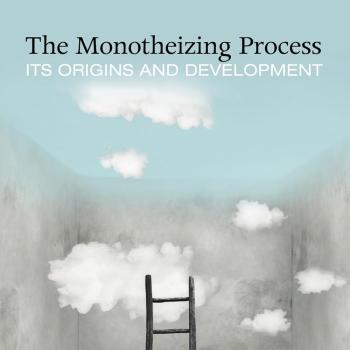The Catholic Church officially sanctioned the doctrine of the Trinity in the late 4th century. It had never been known until the Three Cappodocians formulated it in the 370s. What is it? In the English language, it is that God is one essence manifested by three co-equal and co-eternal Persons: the Father, the Son (Jesus Christ), and the Holy Spirit (Gr. pneuma=spirit), which means the Holy Spirit is a full-fledged Person. But what does the Bible say about this, especially about the Holy Spirit being a Person?
New Testament theology is based a lot on the two Genesis accounts of creation and the fall of man (Genesis 1-3). Because of this, should we look to this same creation of human beings as the prime basis for understanding the nature of the Holy Spirit and the relation of that Holy Spirit to God?
Jesus based his teaching about marriage and divorce mostly on the creation of human beings. For, some Pharisees tested him by asking, “‘Is it lawful for a man to divorce his wife for any cause?’ He answered, ‘Have you not read that the one who made them at the beginning “made them male and female,” and said, “For this reason a man shall leave his father and mother and be joined to his wife, and the two shall become one flesh”? So they are no longer two, but one flesh. Therefore what God has joined together, let no one separate.’ They said to him, ‘Why then did Moses command us to give a certificate of dismissal and to divorce her?’ He said to them, ‘It was because you were so hardhearted that Moses allowed you to divorce your wives, but from the beginning it was not so’” (Mt 19.3-8; cf. Mk 10.2-12; all scripture references from the NRSV).
The Apostle Paul based the origin of sin on the spiritual fall of Adam in the Garden of Eden. He explains, “sin came into the world through one man, and death came through sin, and so death spread to all because all have sinned” (Rom 5.12). He likewise states, “because of one man’s trespass, death exercised dominion through that one” (v. 17). Nothing new here; most Bible believers—both Jews and Christians—have accepted the story of the fall of man, recorded in Gen 3, as literally having happened.
Paul also states therein that “Adam … is a type of the one who was to come,” that is, “the one man, Jesus Christ” (Rom 5.14-15). He brings it out more clearly in another letter while teaching on the future resurrection of the saints by saying, “The first man, Adam, became a living being,” alluding to Gen 2.7, and “the last Adam,” referring to Jesus, “became a life-giving spirit” in his resurrection (1 Cor 15.45).
Paul continues, “But it is not the spiritual that is first, but the physical, and then the spiritual. The first man was from the earth, a man of dust; the second man is from heaven. As was the man of dust, so are those who are of the dust; and as is the man of heaven, so are those who are of heaven. Just as we have borne the image of the man of dust, we will also bear the image of the man of heaven” (1 Cor 15.46-49). When Paul here calls Jesus “the man of heaven,” he doesn’t mean Jesus preexisted and came from heaven to become a man. If he did, to be consistent we must interpret “those who are of heaven” as referring to the saints. That would mean they preexisted in heaven too, which is ludicrous.
In our era, when women have made great strides in gaining human rights, for many of them the Apostle Paul conceptually is in the doghouse for his teaching on the woman’s role in both society and marriage. He writes, “Let a woman learn in silence with full submission. I permit no woman to teach or to have authority over a man; she is to keep silent” (1 Tim 2.11-12). Now, Paul does not mean this in all situations, but in the congregational meetings of the churches (cf. vv. 8-9). It is even clearer in another of his epistles wherein he writes, “As in all the churches of the saints, women should be silent in the churches. For they are not permitted to speak, but should be subordinate, as the law also says” (1 Cor 15.33-34). Some women nowadays, upon reading that, would like to take up arms against Paul!
But what does Paul then say? He adds, “If there is anything they desire to know, let them ask their husbands at home. For it is shameful for a woman to speak in church” (1 Cor 14.35). Paul no doubt realizes the negative reaction he could receive from women, even in that patriarchal society. But he doesn’t ignore it; rather, he senses that some might thereupon question his authority as a true apostle of Jesus. Not forsaking the challenge, Paul then continues writing to the Corinthians, “Or did the word of God originate with you? Or are you the only ones it has reached? Anyone who claims to be a prophet, or to have spiritual powers, must acknowledge that what I am writing to you is a command of the Lord. Anyone who does not recognize this is not to be recognized” (vv. 36-38). That’s putting it quite bluntly. Was Paul a woman hater, as some charge?
No! Authorities have long recognized that one of the biggest problems with the church is that it is full of strong woman and weak men. In fact, in many churches women far outnumber men. One reason is the unbiblical hierarchy of church government and ministry. Another is that some women fail to obey Paul’s exhortation to “ask their husbands at home” concerning their spiritual and theological questions. Guess what that does? It causes the husband to feel respected by his wife. And it just might motivate him to learn more about God and the Bible. Paul teaches men and women in their marriage: “husbands, love your wives,” and “wives, be subject to your husbands as you are to the Lord. For the husband is the head of the wife just as Christ is the head of the church,… Just as the church is subject to Christ, so also wives ought to be, in everything, to their husbands” (Eph 5.22-25). And Paul adds, “a wife should respect her husband” (v. 32). A wife shows respect for her husband when she asks him such questions rather than asking the male pastor or some other male church leader. It may be the best way to cause a husband to accept his role as spiritual leader of his family.
Does Paul attempt to justify such teaching? Yes, and he supports it by citing creation and the fall, not culture. He writes, “For Adam was formed first, then Eve; and Adam was not deceived, but the woman was deceived and became a transgressor” (1 Tim 2.13-15). So, Paul makes it clear that his teaching for women is not based on the patriarchal culture of his time, as if it doesn’t apply to the time in which we live. Rather, he bases it on the creation and fall of the first man and woman recorded at the beginning of the Bible.
Paul continues in his first letter to the Corinthians, “I want you to understand that Christ is the head of every man, and the husband is the head of his wife, and God is the head of Christ” (1 Cor 11.3). Paul justifies this by explaining, “Indeed, man was not made from woman, but woman from man. Neither was man created for the sake of woman, but woman for the sake of man” (vv. 8-9). There’s that creation thing again. That’s six times Bible characters have based their theology or anthropology on creation or the fall.
Paul then reveals that what he teaches on this is not peculiar to himself but typical of all churches by saying, “But if anyone is disposed to be contentious—we have no such custom, nor do the churches of God.”
With this introduction, we will now consider the nature of the Holy Spirit and how it relates to God. The Catholic Church had determined that the Holy Spirit is a Person (Gr. hypostasis=substance) to be distinguished from the triune God, and the Holy Spirit is co-equal, co-eternal, and consubstantial with both God the Father and the Logos-Son, who is Jesus Christ. Also, the Church declared it essential that people believe this teaching in order to receive God’s salvation. But none of this dogma is in the Bible.
If we follow the practice of the New Testament church in basing a substantial portion of our theology on the Genesis accounts of creation, we will arrive at the correct way to think of how the Holy Spirit relates to the one God. For, we read in Genesis 1 that on the sixth and last day of creation, “Then God said, ‘Let us make humankind in our image, according to our likeness’” (Gen 1.26). Who was “us”? God most likely was speaking to a select group of angels (Jewish interpretation) rather than, as most Trinitarians assert, to the other two members of a supposed triune Godhead. But this statement in Gen 1.26 opposes this Trinitarian teaching. For next read, “So God created humankind in his image, in the image of God he created them; male and female he created them” (v. 27; cf. 5.1-2). So, if God is three persons man would have to be three persons, which is ludicrous.
Since God created humankind in his image, and each human being has a spirit just as God has a Spirit, shouldn’t we compare God’s Spirit, which is the Holy Spirit, with the human spirit in order to determine the nature of God’s Spirit and how it relates to God? If we do, we will be basing our study of the Holy Spirit, our pneumatology, on creation. In doing so, we discover that God’s Spirit is to God what a human spirit is to a human being because God made human beings in his own image.
To conclude, since the human spirit is not a person to be distinguished from a human being as a separate person, neither is God’s Spirit to be distinguished from God as a separate person.
…………….
To see a list of titles of 130+ posts (2-3 pages) that are about Jesus not being God in the Bible, with a few about God not being a Trinity, at Kermit Zarley Blog click “Chistology” in the header bar. Most are condensations of my book, The Restitution of Jesus Christ. See my website servetustheevangelical.com, which is all about this book, with reviews, etc. Learn about my books and purchase them at kermitzarley.com. I was a Trinitarian for 22 years before reading myself out of it in the Bible.












